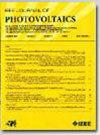ResAG-UNet:一种用于天空图像云分割的残余注意门控UNet
IF 2.6
3区 工程技术
Q3 ENERGY & FUELS
引用次数: 0
摘要
云层显著影响到达地球表面的太阳辐射,从而影响太阳能系统的效率和输出。因此,准确的云分割方法对于实时和未来了解太阳辐照度的波动至关重要。这样的理解有助于优化能源生产和电网管理。在本文中,我们设计了一种新的深度学习架构,称为残余注意力门控- unet (ResAG-UNet),用于准确的云分割。提出的reag - unet在编码器和解码器路径中集成了剩余块,并在解码器路径中集成了注意机制。残块的包含有利于更快的梯度运动,因为跳跃路径穿过它们,从而提高训练效率。此外,在ResAG-UNet中合并一个注意力模块允许学习不同像素的注意力系数。这种机制主动突出关键特征,同时抑制云图中不太重要的特征。利用NITK和SWIMSEG天空数据集对ResAG-UNet模型与基准分割模型进行了评估和比较。该方法在NITK和SWIMSEG天空数据集上的平均IOU、精密度、召回率、F1得分和准确率分别为(0.8616,0.8826)、(0.9761,0.9965)、(0.9863,0.9764)、(0.9237,0.9613)和(0.9424,0.9651)。本文章由计算机程序翻译,如有差异,请以英文原文为准。
ResAG-UNet: A Novel Residual Attention Gated UNet for Cloud Segmentation in Sky Image
Cloud cover significantly impacts the solar radiation reaching the Earth's surface, thereby influencing the efficiency and output of solar energy systems. Consequently, an accurate cloud segmentation approach is crucial for understanding fluctuations in solar irradiance in real time and future ahead. Such understanding aids in optimizing energy production and grid management. In this article, we designed a novel deep learning architecture called Residual Attention Gated-UNet (ResAG-UNet) for accurate cloud segmentation. The proposed ResAG-UNet integrates residual blocks in both the encoder and decoder paths, along with an attention mechanism in the decoder path. The inclusion of residual blocks facilitates faster gradient movement due to skip pathways across them, thereby enhancing training efficiency. Furthermore, the incorporation of an attention module in ResAG-UNet allows for the learning of attention coefficients for various pixels. This mechanism actively highlights crucial characteristics while suppressing less significant ones in the cloud image. The proposed ResAG-UNet model is assessed and compared with benchmark segmentation models using NITK and SWIMSEG sky datasets. The proposed approach yields mean IOU, precision, recall, F1 score, accuracy of (0.8616, 0.8826), (0.9761,0.9965), (0.9863,0.9764), (0.9237,0.9613), and (0.9424, 0.9651) on the NITK and SWIMSEG sky datasets, respectively.
求助全文
通过发布文献求助,成功后即可免费获取论文全文。
去求助
来源期刊

IEEE Journal of Photovoltaics
ENERGY & FUELS-MATERIALS SCIENCE, MULTIDISCIPLINARY
CiteScore
7.00
自引率
10.00%
发文量
206
期刊介绍:
The IEEE Journal of Photovoltaics is a peer-reviewed, archival publication reporting original and significant research results that advance the field of photovoltaics (PV). The PV field is diverse in its science base ranging from semiconductor and PV device physics to optics and the materials sciences. The journal publishes articles that connect this science base to PV science and technology. The intent is to publish original research results that are of primary interest to the photovoltaic specialist. The scope of the IEEE J. Photovoltaics incorporates: fundamentals and new concepts of PV conversion, including those based on nanostructured materials, low-dimensional physics, multiple charge generation, up/down converters, thermophotovoltaics, hot-carrier effects, plasmonics, metamorphic materials, luminescent concentrators, and rectennas; Si-based PV, including new cell designs, crystalline and non-crystalline Si, passivation, characterization and Si crystal growth; polycrystalline, amorphous and crystalline thin-film solar cell materials, including PV structures and solar cells based on II-VI, chalcopyrite, Si and other thin film absorbers; III-V PV materials, heterostructures, multijunction devices and concentrator PV; optics for light trapping, reflection control and concentration; organic PV including polymer, hybrid and dye sensitized solar cells; space PV including cell materials and PV devices, defects and reliability, environmental effects and protective materials; PV modeling and characterization methods; and other aspects of PV, including modules, power conditioning, inverters, balance-of-systems components, monitoring, analyses and simulations, and supporting PV module standards and measurements. Tutorial and review papers on these subjects are also published and occasionally special issues are published to treat particular areas in more depth and breadth.
 求助内容:
求助内容: 应助结果提醒方式:
应助结果提醒方式:


